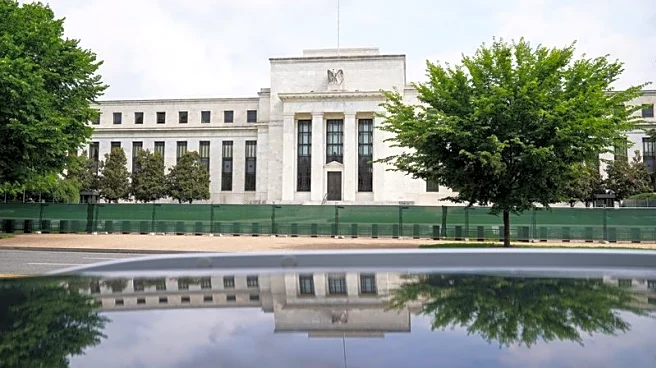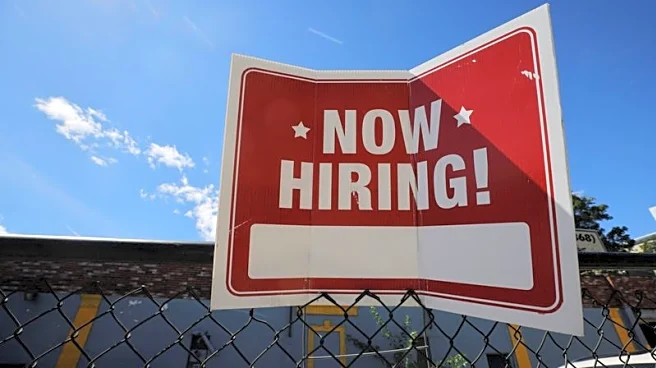What's Happening?
The Institute for Supply Management (ISM) has reported an increase in its nonmanufacturing purchasing managers index (PMI) to 52.0 in August, up from 50.1 in July. This indicates growth in the U.S. service sector, which constitutes more than two-thirds of the economy. Despite this growth, employment in the sector remains weak, with the ISM's measure of services employment showing little change at 46.5, marking the third consecutive month of contraction. Economists have attributed the weakened labor market to President Trump's tariffs, which have increased the average tariff rate to levels not seen since 1934. The unemployment rate is expected to rise to 4.3% from 4.2% in July, with job gains averaging 35,000 per month over the last three months, a significant drop from the 123,000 average during the same period in 2024.
Why It's Important?
The growth in the service sector is a positive sign for the U.S. economy, suggesting resilience despite challenges in the labor market. However, the weak employment figures highlight ongoing concerns about the impact of tariffs and inflation. The Federal Reserve has paused its interest rate cutting cycle due to fears of inflation, which remains elevated. The ISM's new orders measure rose to 56.0, indicating increased demand, but the measure of prices paid remains high, suggesting persistent inflationary pressures. These dynamics could influence future monetary policy decisions, impacting businesses and consumers alike.
What's Next?
The Federal Reserve is expected to consider a rate cut at its upcoming policy meeting on September 16-17, as indicated by Fed Chair Jerome Powell. This decision will be closely watched as it could provide relief to the labor market and address inflation concerns. The outcome of this meeting will have significant implications for economic stakeholders, including businesses and investors, as they navigate the current economic landscape.












